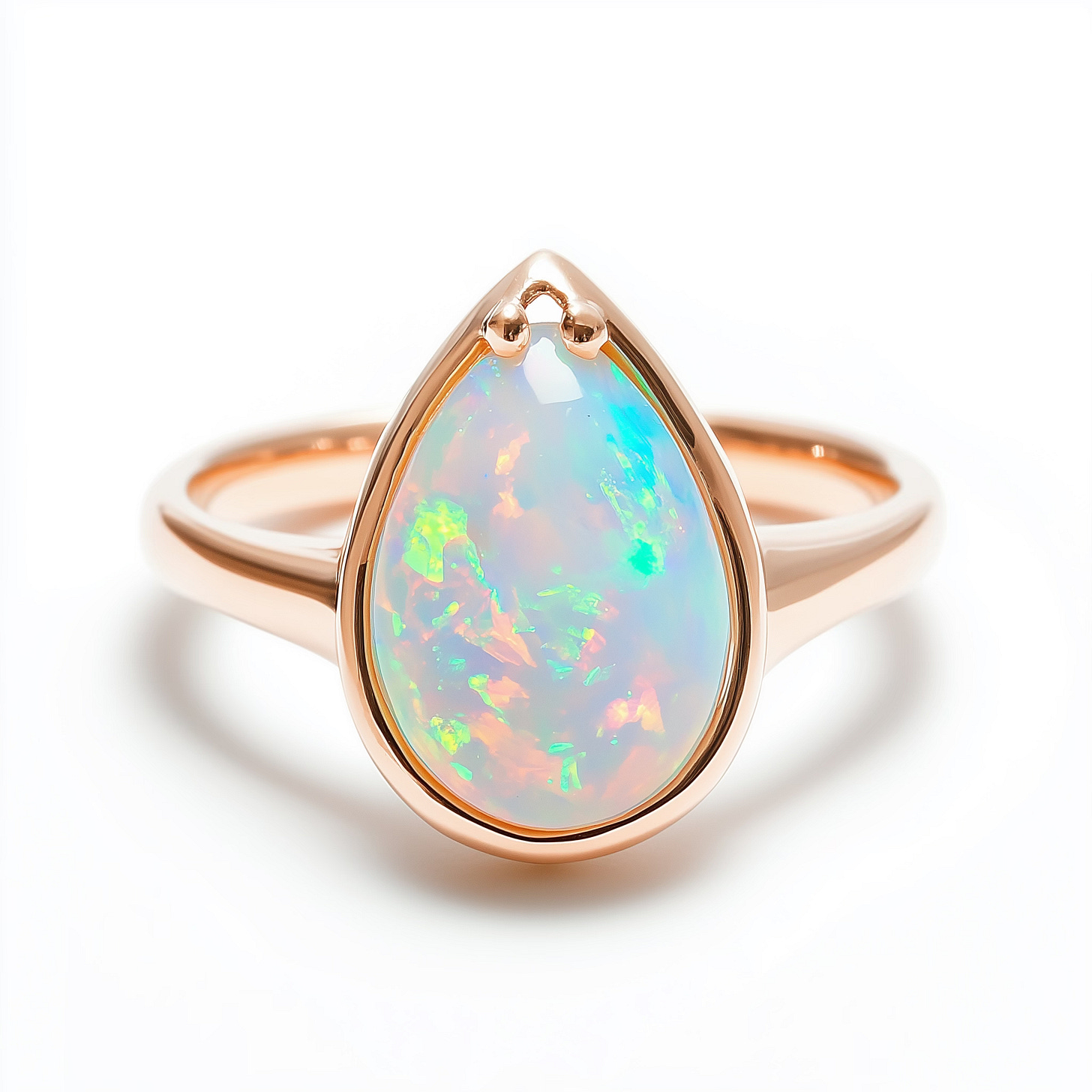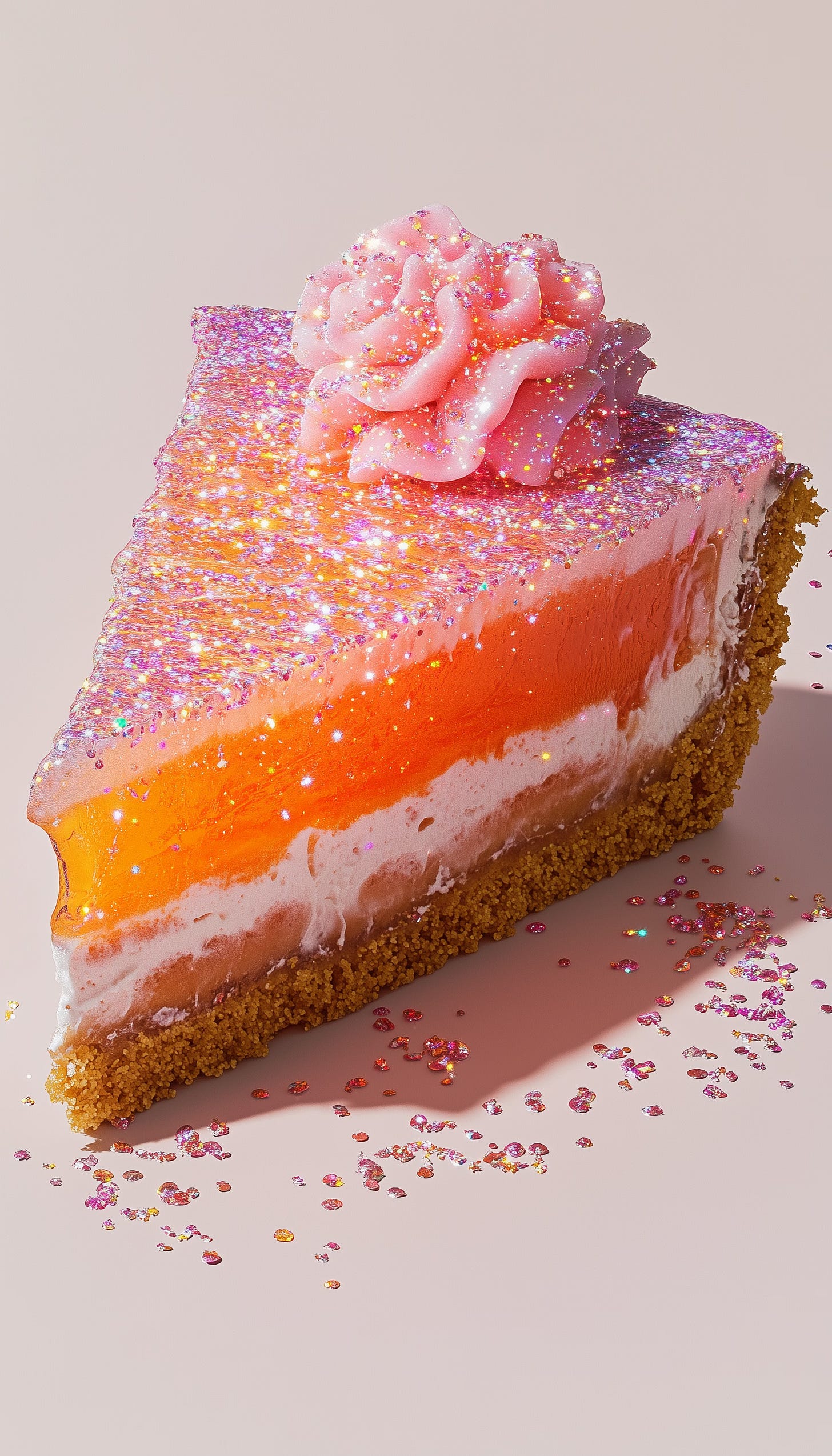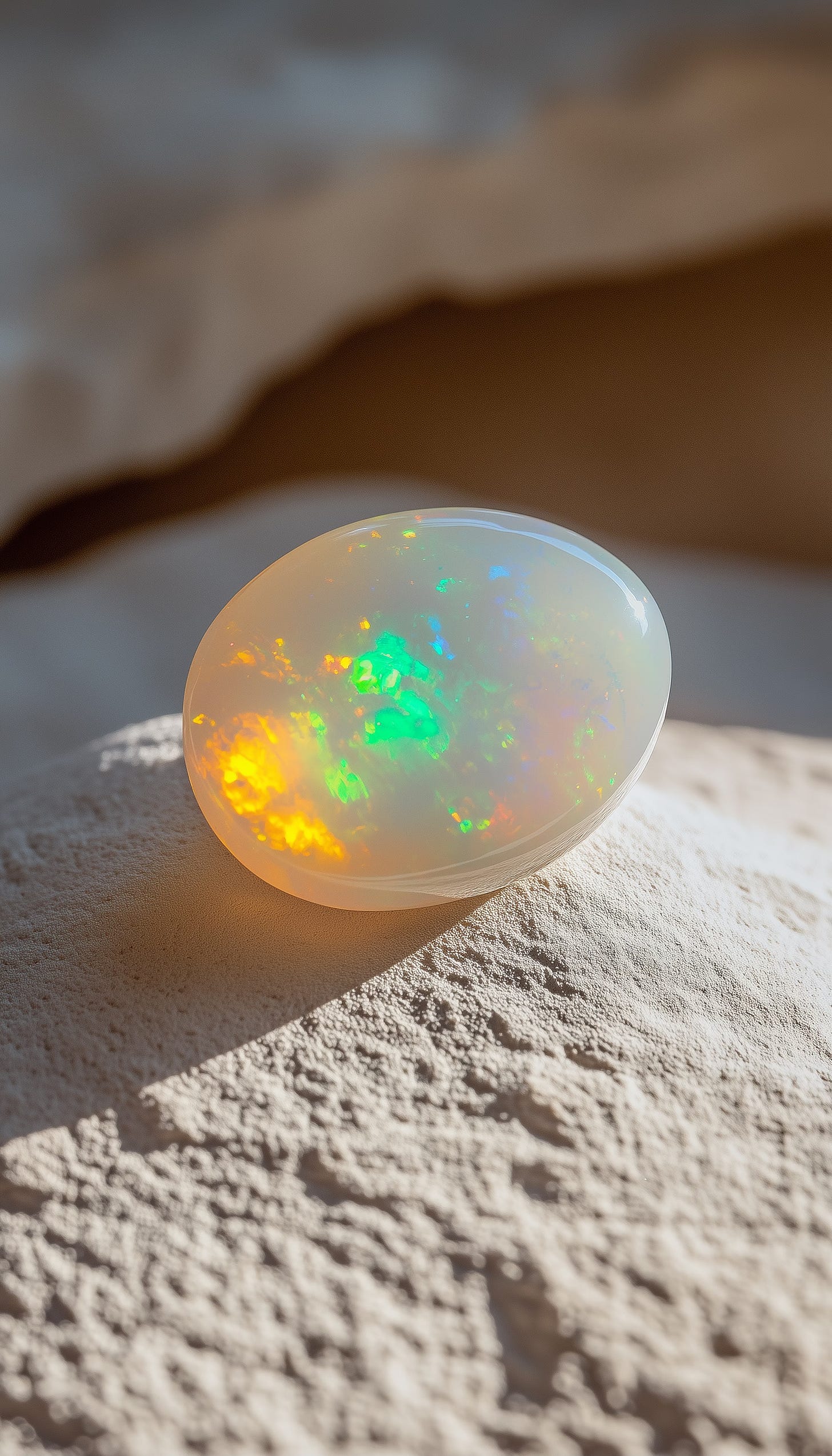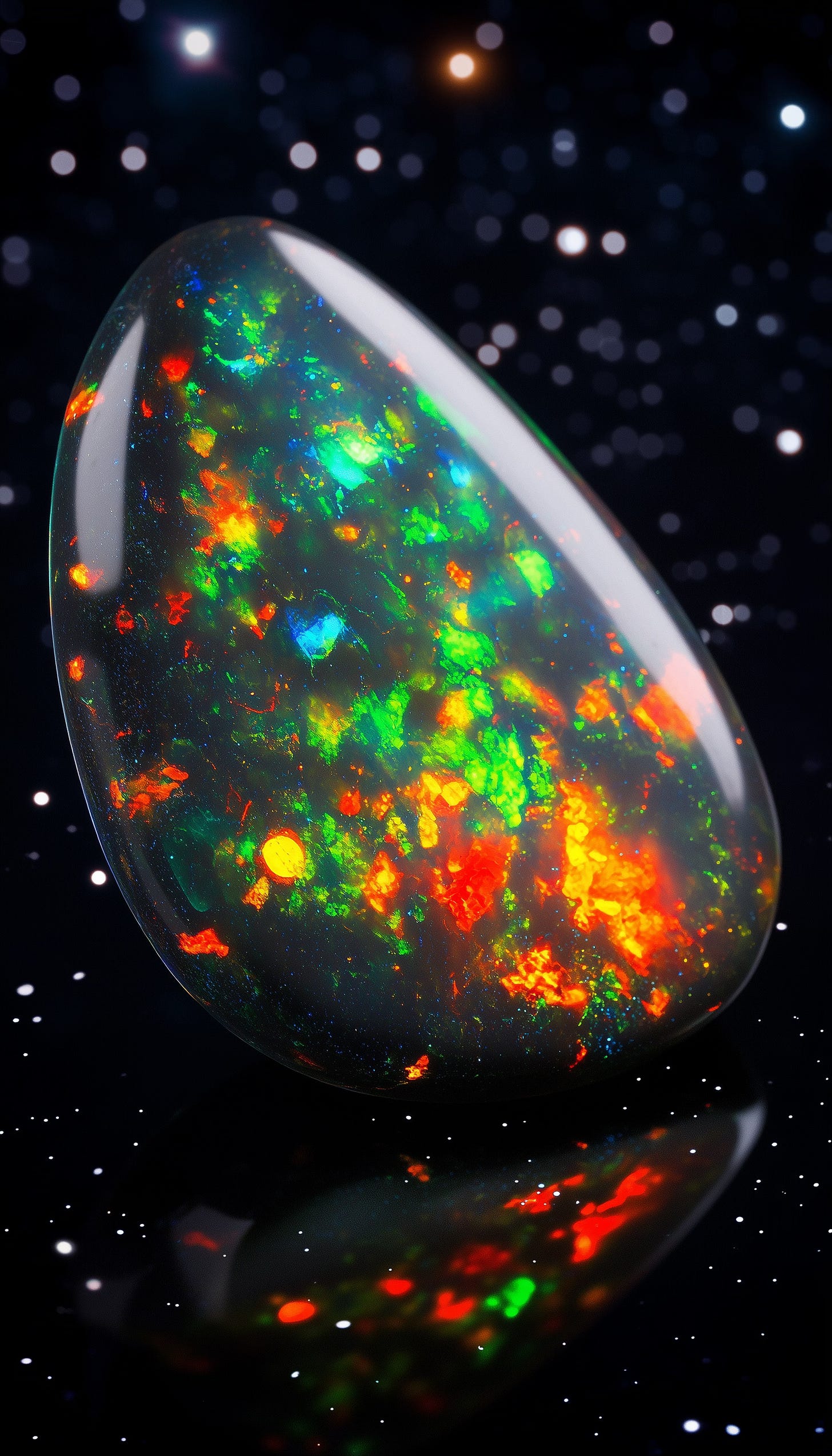Opals, October's birthstone, have captivated people for centuries with their stunning play-of-color and mysterious beauty. This gemstone is not only admired for its aesthetic appeal but also cherished for its symbolism, cultural significance, and alleged healing properties. Below, we explore the history, benefits, and unique qualities of opals, along with a delightful opal-inspired sweet treat recipe to celebrate this magical gem.
The Benefits of Opals
Emotional Healing and Balance
Opals are associated with emotional healing and balancing one’s mood. They are believed to help clear negative emotions, soothe anxiety, and encourage a state of calm, promoting emotional stability.Enhancing Creativity and Imagination
Known as stones of inspiration, opals are thought to boost creativity and spark the imagination. Artists, writers, and other creatives often wear opals to enhance their artistic abilities, with the gemstone's iridescence symbolizing the array of possibilities in self-expression.Amplifying Self-Awareness and Inner Reflection
With their reflective quality, opals encourage self-awareness and introspection. They are said to be powerful tools for uncovering hidden emotions or unresolved issues, assisting in personal growth and transformation.Symbols of Hope and Protection
Throughout history, opals have been seen as symbols of hope, good fortune, and protection. The Ancient Greeks believed they gave their owners foresight, while during the Middle Ages, they were considered to possess the virtues of all other gemstones due to their play-of-color.Strengthening Love and Passion
In many cultures, opals symbolize love and passion. Sometimes referred to as "Cupid stones," they are believed to attract romance and enhance emotional connections between partners, with their fiery colors representing desire and devotion.
Australia’s Connection to Opals
Australia has long been associated with opals, supplying around 95% of the world’s opal production. The gemstone is deeply tied to the country's identity, even declared as its official gemstone in 1993. Regions such as Coober Pedy, Lightning Ridge, and Andamooka are known for their opal mines, each producing unique varieties.
Opals also hold cultural significance in Aboriginal folklore, where they symbolize the rainbow created by a great ancestral being, leaving colorful stones across the land. This spiritual connection adds to the mystique of opals and their perceived metaphysical benefits.
What is a Black Opal and Why is it So Valuable?
Black opals are among the rarest and most valuable types of opals, characterized by their dark body tone (ranging from deep black to dark blue or grey), which makes their vivid play-of-color even more striking. This dark background serves as a dramatic contrast, enhancing the gemstone's colors and making them appear brighter and more intense.
Lightning Ridge, a mining town in New South Wales, Australia, is the most famous source of black opals, known for producing some of the world's finest specimens. Factors contributing to the high value of black opals include:
Rarity: As the rarest type of opal, black opals are highly sought after by collectors and gemstone enthusiasts.
Play-of-Color Intensity: The dark body tone enhances the play-of-color, creating vibrant and captivating displays.
Color Patterns: Opals with rare patterns, like "harlequin" or "pinfire," are particularly prized.
Quality: Well-cut, flawless stones with balanced color displays fetch the highest prices.
Symbolism and Mystique
Opals are often linked to the crown chakra, associated with spiritual enlightenment and unity of mind, body, and spirit. The shifting colors symbolize harmony and transformation. Although some myths cast opals as "cursed" due to 19th-century superstition, their reputation has since recovered, and they are now embraced as symbols of beauty, healing, and mystical power.
Iridescent Opal Jelly Cake Recipe
Ingredients:
Crust (optional for a firmer base):
1/3 cup almonds
1/3 cup seedless dates
1/4 cup dried cherries
1/2 cup shredded coconut
Fruit Layer:
1 cup fruit juice (like white grape, lychee, or coconut water for a light color)
1/2 cup water
1/2 cup vegan yogurt (optional for a creamy touch)
2 teaspoons agar-agar powder
2 tablespoons sugar
2 cups mixed fresh fruits (e.g., strawberries, kiwi, or peaches), chopped small
Milk Layer:
1 cup coconut milk
1 teaspoon agar-agar powder
3 tablespoons sugar
Iridescent Opal Layers:
1 cup water (for each layer, x2)
2 teaspoons agar-agar powder (for each layer, x2)
1/4 cup sugar (for each layer, x2)
Edible luster dust (various colors: white, silver, pink, blue)
Edible glitter (optional)
Instructions:
Prepare the Crust (Optional):
In a food processor, blend almonds, dates, dried cherries, and shredded coconut until the mixture forms a breadcrumb-like texture.
Press into the bottom of an 8" springform pan and place in the fridge to chill.
Make the Fruit Layer:
In a saucepan, combine fruit juice, water, and vegan yogurt (if using). Add agar-agar powder and sugar while stirring.
Bring the mixture to a boil and simmer for 5 minutes, stirring continuously.
Pour a third of the mixture into the chilled pan, then quickly add half of the chopped fruit. Let it set for about 10-15 minutes. Repeat with another third of the mixture and remaining fruit, and then top with the last third. Let this layer set completely.
Add the Milk Layer:
In a saucepan, heat coconut milk, agar-agar, and sugar. Bring to a boil and cook for 5 minutes, stirring continuously.
Pour over the set fruit layer and let it chill until firm.
Create the Iridescent Opal Layers:
Prepare Colors and Tools: Assemble different bowls, small whisks, luster dusts, and a pourable container. Keep your chilled springform pan handy.
First Opal Layer: Boil water, agar-agar, and sugar in a saucepan, stirring constantly. Divide into small bowls and mix in different colors of luster dust (a pinch each of silver, pink, blue, and white).
Pouring Technique: Drizzle the iridescent mixtures over the set milk layer, letting them blend naturally to form an overlapping pattern. Use different colors for each pour to create a multi-layered, shimmering effect. Allow this layer to set.
Second Opal Layer: Repeat the process with the remaining water, agar-agar, sugar, and different luster dust colors to create a second opal-like pattern on top. Allow to set.
Final Touches:
Optionally, sprinkle some edible glitter for extra sparkle and a true opal appearance.
Once fully set, wrap a warm, damp cloth around the outside of the springform pan, run a knife around the edges, and release the cake from the pan.
Place the cake on a serving platter.
Garnishing:
Decorate with a few edible flowers or delicate fruit slices on top for a natural touch that enhances the opalescence.
Tips for a Better Opal Effect:
Use clear fruit juices and light-colored agar layers to allow the iridescence to shine through.
Layer the luster dusts in a way that mimics the natural play-of-color in real opals.
If you want to mimic more of a black opal, you can incorporate dark layers using blackberry or dark grape juice for added contrast.
The resulting dessert will resemble a magical piece of opal, shimmering and colorful, capturing the essence of the gemstone in a delightful, edible form. Enjoy the experience of creating and savoring a taste of the ethereal beauty of opals!









